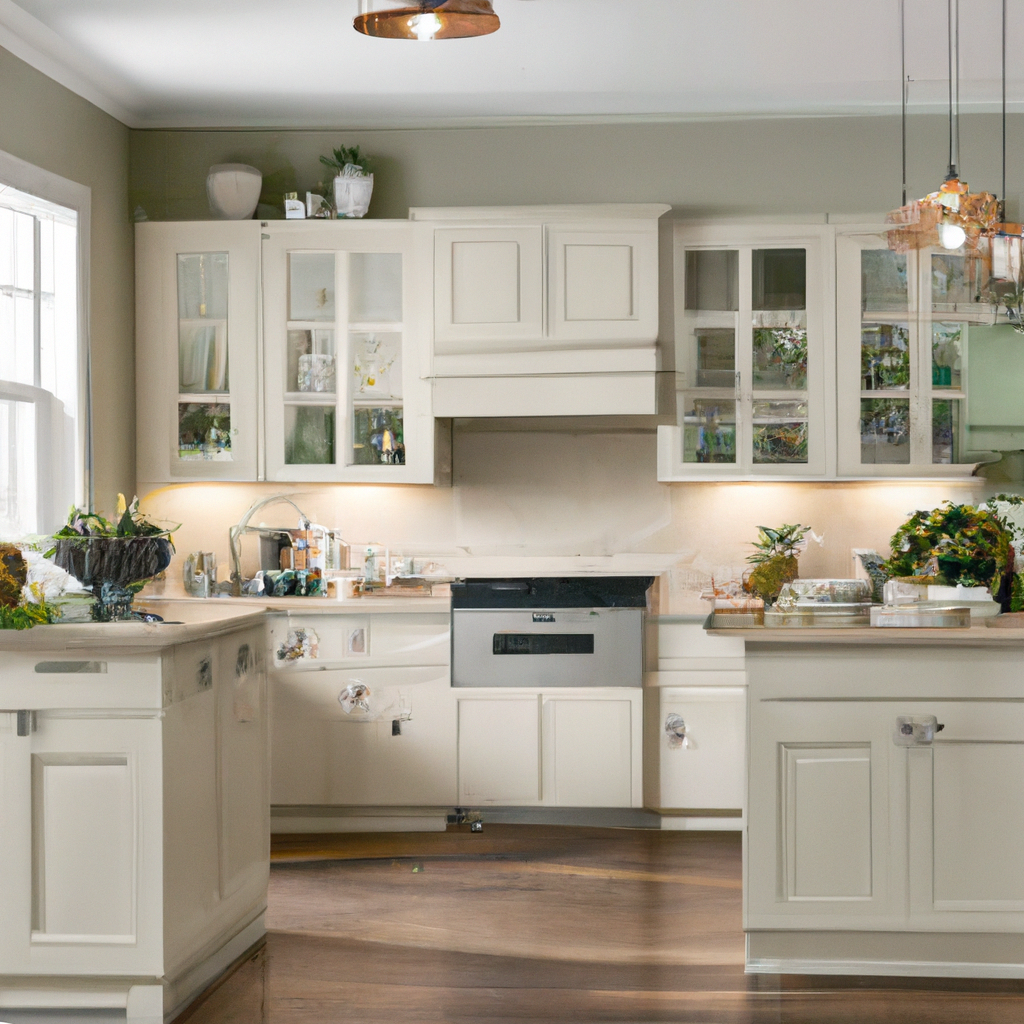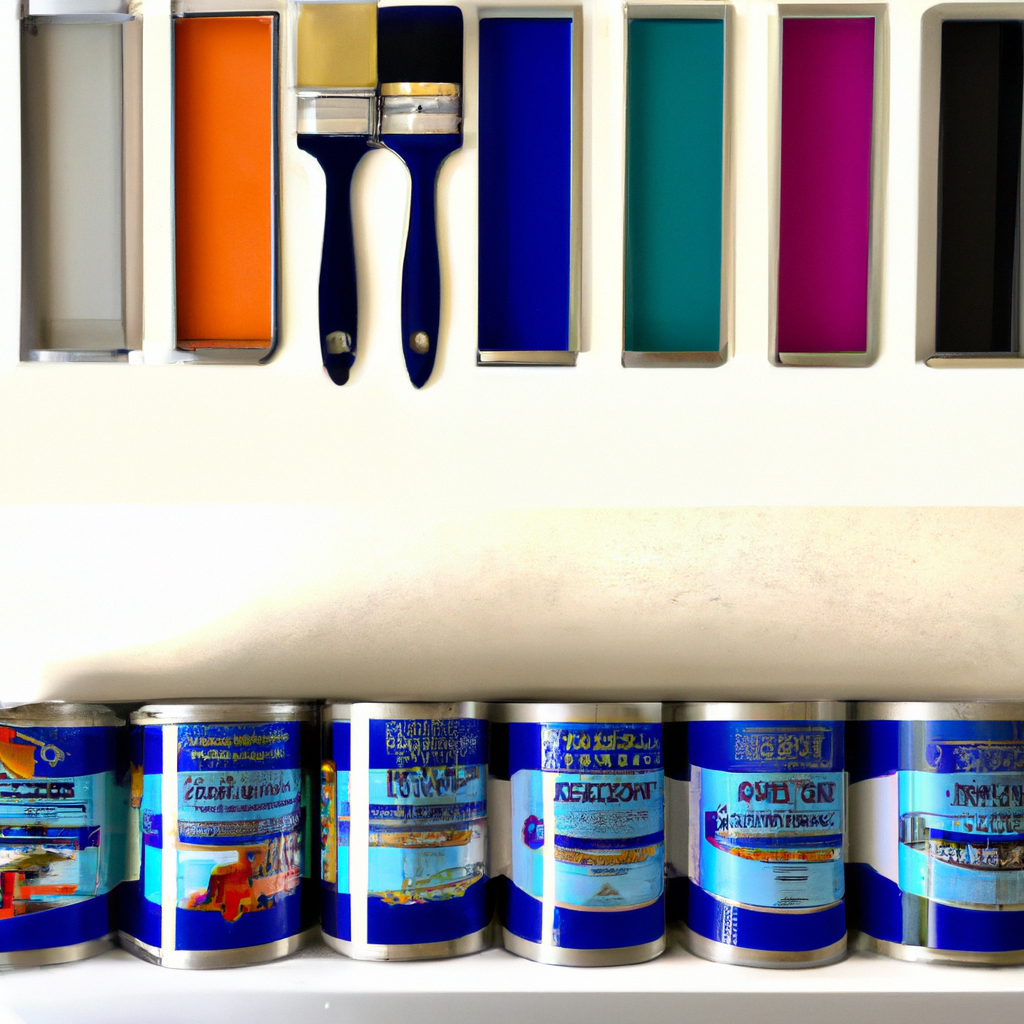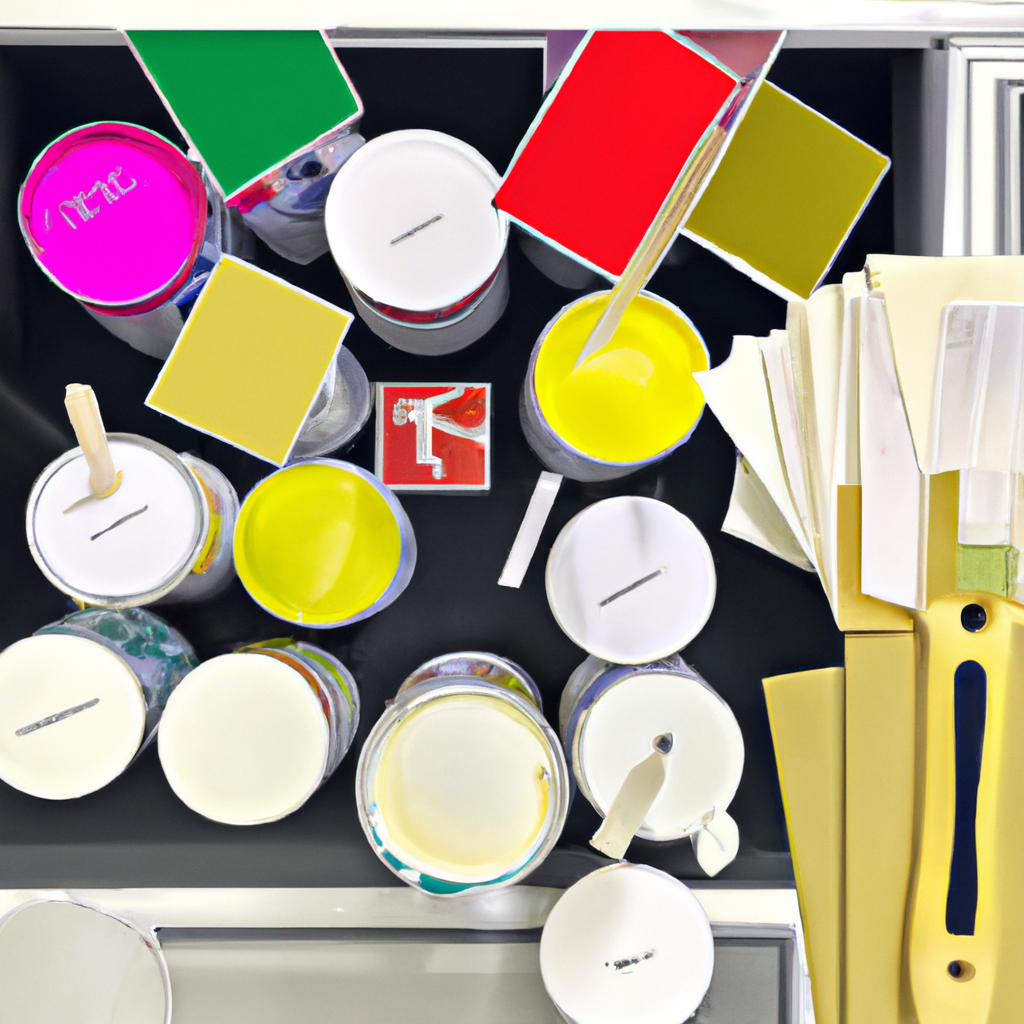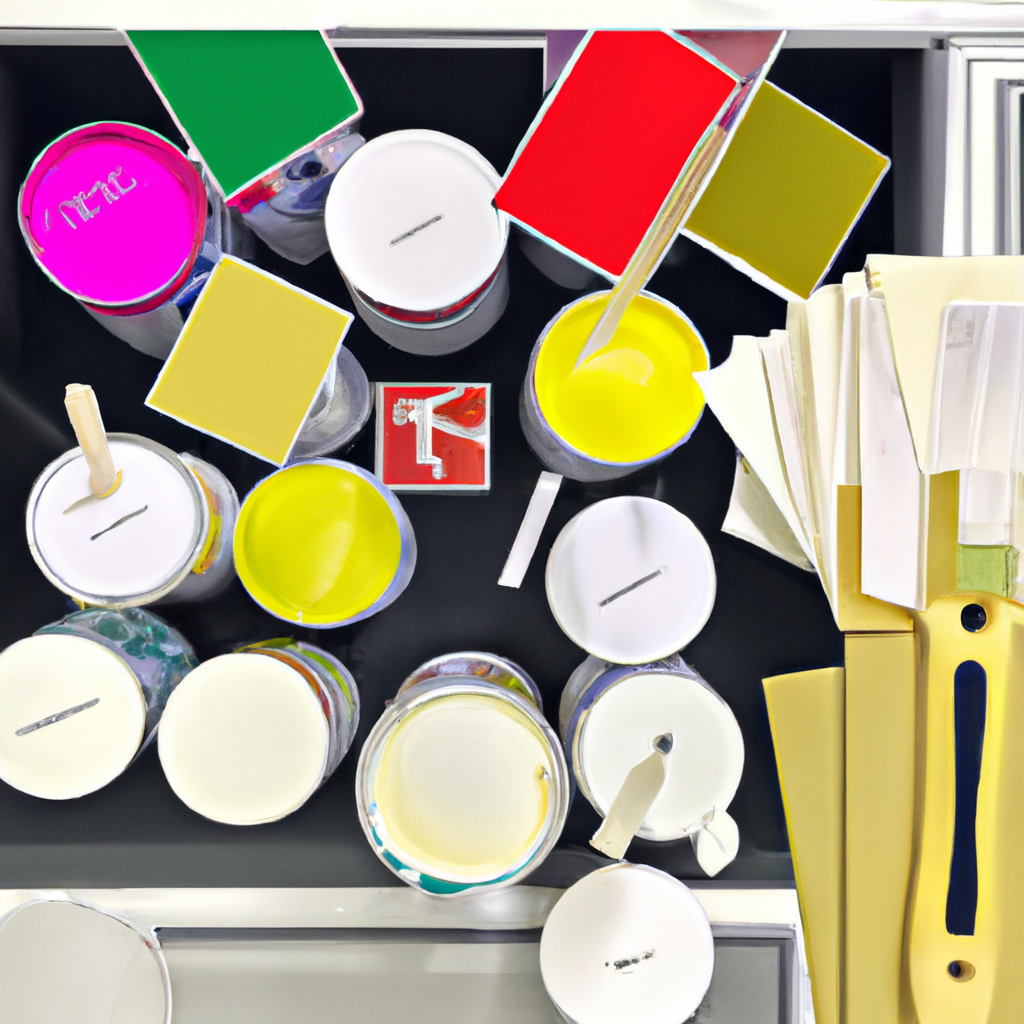Are your kitchen cabinets in need of a fresh coat of paint? Look no further! In this ultimate guide, you will discover everything you need to know about finding the best paint for your kitchen cabinets. From different types of paint finishes to tips on preparation and application, we’ve got you covered. So, grab your paintbrush and get ready to transform your kitchen with a brand new look!

Factors to Consider when Choosing Kitchen Cabinet Paint
Choosing the right paint for your kitchen cabinets is essential to achieving the desired look and longevity. There are several factors you should consider before making your decision: the type of paint, the finish, the color, the durability, and the ease of application. In this comprehensive guide, we will explore each of these factors in detail to help you make an informed decision and create a stunning kitchen.
Types of Paint for Kitchen Cabinets
When it comes to painting kitchen cabinets, there are several types of paint to choose from. Each type has its own set of advantages and considerations. Let’s take a closer look at the most common types of paint for kitchen cabinets:
Latex Paint
Latex paint is a popular choice for kitchen cabinets due to its durability and ease of use. It dries quickly, has low levels of toxins, and is easy to clean up with soap and water. Latex paint is available in a wide range of colors, making it a versatile option for any kitchen style.
Oil-Based Paint
Oil-based paint is known for its durability and smooth finish. It provides a hard, protective coating that can withstand heavy use and frequent cleaning. However, oil-based paint has a longer drying time and can emit strong fumes during application, requiring proper ventilation. Additionally, cleaning up oil-based paint requires mineral spirits.
Milk Paint
Milk paint is an eco-friendly option that is made from natural ingredients such as milk protein, limestone, clay, and pigments. It has a unique, vintage look and is available in a variety of vibrant colors. Milk paint requires a bonding agent or primer for adhesion to cabinets with a slick surface or previously painted cabinets.
Chalk Paint
Chalk paint is a popular choice among DIY enthusiasts due to its easy application and ability to create a shabby-chic or distressed look. It has a matte finish and can be applied without sanding or priming. However, chalk paint may require a protective topcoat to increase durability, especially in high-traffic areas like kitchen cabinets.
Choosing the Right Finish
The finish you choose for your kitchen cabinets can greatly impact the overall look and feel of your space. There are several finishes to choose from, each with its own characteristics. Here are the most common finishes for kitchen cabinets:
Gloss
Gloss finish provides a shiny and reflective surface. It can give your kitchen cabinets a sleek and modern look, but it also tends to show imperfections more easily. Gloss finish is typically more suited for contemporary or minimalist kitchen designs.
Semi-Gloss
Semi-gloss finish strikes a balance between glossy and matte. It offers a subtle shine and is easier to clean than matte finishes. Semi-gloss finish is a popular choice for kitchen cabinets as it provides a durable and moisture-resistant surface.
Matte
Matte finish has a non-reflective and velvety appearance. It can create a sophisticated and elegant look for your kitchen cabinets. Matte finish is less prone to showing fingerprints or smudges, making it a practical choice for busy kitchens.
Satin
Satin finish falls between matte and semi-gloss. It has a soft sheen that adds a touch of elegance to your cabinets. Satin finish is a versatile option that works well with various kitchen styles and is easy to clean.
Considering Color Options
The color of your kitchen cabinets can have a significant impact on the overall aesthetic of your kitchen. When choosing a color, it’s important to consider various factors such as the style of your kitchen, the size of the space, and your personal preference. Here are some things to consider when selecting a color for your kitchen cabinets:
Neutral Colors
Neutral colors like white, cream, gray, and beige are timeless choices that can complement any kitchen style. They create a bright and clean look, making your kitchen appear more spacious. Neutral colors also provide a versatile canvas for decorating and allow other elements in the kitchen to stand out.
Bold Colors
If you’re feeling adventurous, consider incorporating bold colors into your kitchen cabinets. Colors like navy blue, emerald green, or rich burgundy can add personality and drama to your kitchen. However, it’s important to strike a balance and ensure that the bold color doesn’t overwhelm the space.
Light vs. Dark Colors
Light-colored cabinets can make a small kitchen feel more open and airy, while dark-colored cabinets add depth and richness to a larger space. Consider the natural lighting and size of your kitchen when deciding between light or dark colors. Keep in mind that light-colored cabinets may require more frequent cleaning to maintain their appearance.
Color Trends
It can be helpful to stay informed about current color trends in kitchen design. Trends change over time, and while it’s essential to choose a color that you love and will enjoy for years to come, incorporating a trendy color can give your kitchen a fresh and updated look. Keep in mind that trends may come and go, so consider how the color will age in the long run.

Factors Affecting Paint Durability
The durability of the paint on your kitchen cabinets is crucial, as they endure daily wear and tear, exposure to heat and moisture, and frequent cleaning. Several factors can affect the durability of the paint:
Quality of Paint
Using a high-quality paint specifically formulated for cabinets will ensure better adhesion, resistance to chipping and fading, and longevity. Investing in quality paint will ultimately save you time and money in the long run.
Prep Work
Proper preparation is key to achieving a durable paint finish. Thoroughly cleaning and degreasing the cabinets, sanding to create a smooth surface, and applying a primer will help the paint adhere properly and increase its longevity.
Sealing and Priming
Applying a sealer or primer before painting can improve the durability of the paint. A primer creates a bond between the surface and the paint, preventing peeling or cracking. A sealer provides an additional layer of protection against moisture and stains.
Maintenance
Regular maintenance and proper cleaning of your painted cabinets will extend their lifespan. Avoid using harsh chemicals or abrasive cleaners that can damage the paint. Instead, opt for gentle cleaning solutions and non-abrasive cloths or sponges.
Preparation Steps for Painting Kitchen Cabinets
Before diving into the painting process, it’s important to prepare your kitchen cabinets properly. Here are the essential steps for preparing your cabinets for painting:
Remove Cabinet Hardware
Start by removing all cabinet hardware, including handles, knobs, and hinges. This will make it easier to paint the cabinet doors and ensure a smooth, professional finish.
Clean and Degrease Surfaces
Thoroughly clean all cabinet surfaces to remove grease, dirt, and any residue that might prevent the paint from adhering properly. Use a gentle cleanser and a soft cloth or sponge to avoid scratching the cabinets.
Sand and Smoothen Cabinets
Use sandpaper to lightly sand the cabinet surfaces. This will create a rougher texture for the primer and paint to adhere to. Sanding also helps to smooth out any imperfections and create a more even surface.
Apply Primer
Apply a high-quality primer to the cabinet surfaces. Priming helps the paint adhere better and provides a uniform base for the paint color. Use a brush or roller to apply an even coat of primer, following the manufacturer’s instructions.

Steps to Paint Kitchen Cabinets
Once your cabinets are prepped and primed, it’s time to paint them. Here are the steps to follow for a successful cabinet painting project:
Tape off Surrounding Areas
Use painter’s tape to protect surrounding areas such as walls, countertops, and floors from accidental paint splatters or drips. This will help you achieve clean and professional-looking results.
Apply Paint with Brushes or Rollers
Choose a high-quality brush or roller appropriate for the type of paint you’re using. Begin by applying paint to the cabinet frames and any areas unreachable by a roller, using smooth and even strokes. Then, use a roller to coat the larger surfaces such as cabinet doors and drawer fronts. Apply the paint in thin, even coats to prevent drips or streaks.
Allow Sufficient Drying Time
Follow the paint manufacturer’s instructions for drying time between coats. Ensure that each coat has fully dried before applying another. Avoid rushing the drying process, as it can lead to uneven coverage or damage the finish.
Apply Additional Coats if Needed
Inspect the cabinets after each coat of paint has dried. If necessary, apply additional coats to achieve the desired color and coverage. Be patient and layer the paint evenly for a professional finish.
Tips for Achieving a Professional Finish
To ensure the best possible results, keep the following tips in mind when painting your kitchen cabinets:
Use High-Quality Brushes and Rollers
Invest in high-quality brushes and rollers specifically designed for painting cabinets. They will provide a smooth and even application, minimizing the appearance of brushstrokes or roller marks.
Apply Thin Coats
Rather than applying thick coats of paint, opt for thin, even layers. This prevents the paint from dripping or pooling and provides better control over the final appearance.
Avoid Excess Paint
Remove excess paint from the brush or roller before applying it to the cabinets. Too much paint can lead to drips, uneven coverage, or a heavy buildup that may affect the durability of the finish.
Eliminate Brush Strokes
To achieve a smooth and professional-looking finish, try using a technique called “laying off.” After applying the paint, lightly drag a dry brush or roller over the painted surface in long, smooth strokes. This helps to eliminate brush strokes or roller marks and creates a more even finish.
Seal the Painted Cabinets
Consider applying a clear topcoat or sealant over the painted cabinets to provide additional protection and durability. This step is particularly important for high-traffic areas like the kitchen. Follow the manufacturer’s instructions for the specific product you choose.
Common Mistakes to Avoid
While painting kitchen cabinets can be a rewarding DIY project, it’s important to avoid common mistakes that can compromise the final outcome. Here are some mistakes to avoid during the painting process:
Skipping the Prep Work
Taking shortcuts with the preparation process can lead to poor adhesion, peeling, or flaking of the paint. Invest time in properly cleaning, degreasing, and sanding the cabinets before applying primer and paint.
Using Low-Quality Paint
Using cheap or inappropriate paint can result in a lackluster finish that doesn’t stand the test of time. Invest in high-quality paint specifically formulated for cabinets to ensure durability and longevity.
Not Allowing Proper Drying Time
Rushing the drying process between coats can lead to uneven coverage or damage to the finish. Be patient and follow the paint manufacturer’s instructions for drying time to achieve the best results.
Rushing the Process
Painting cabinets requires time, patience, and attention to detail. Rushing through the process can lead to sloppy results and the need for touch-ups or repainting.
Neglecting Maintenance
Even with the best paint and proper application, painted cabinets require regular maintenance to stay in top condition. Avoid using abrasive cleaners or harsh chemicals that can damage the paint, and address any spills or stains promptly.
Conclusion
When it comes to choosing paint for your kitchen cabinets, there are several factors to consider, including the type of paint, the finish, the color, the durability, and the ease of application. By taking the time to evaluate these factors and following the proper preparation and painting techniques, you can transform your kitchen and create a beautiful space that reflects your personal style. Remember to invest in high-quality materials and practice proper maintenance to ensure the longevity and beauty of your painted cabinets. With the right paint and care, you can enjoy a stunning kitchen for years to come.

